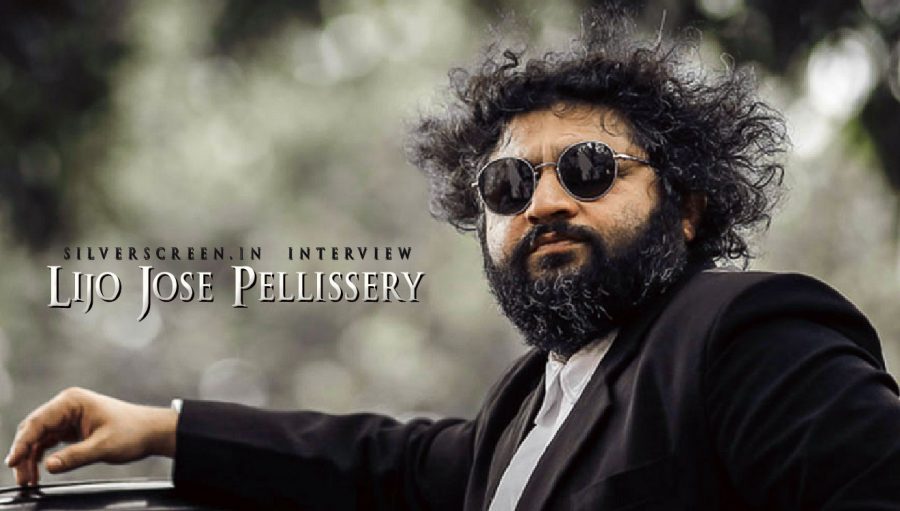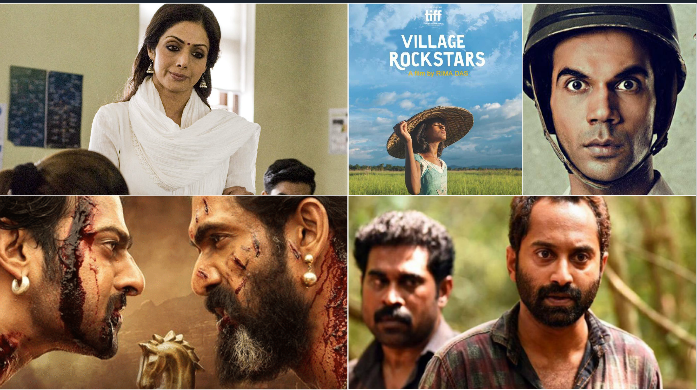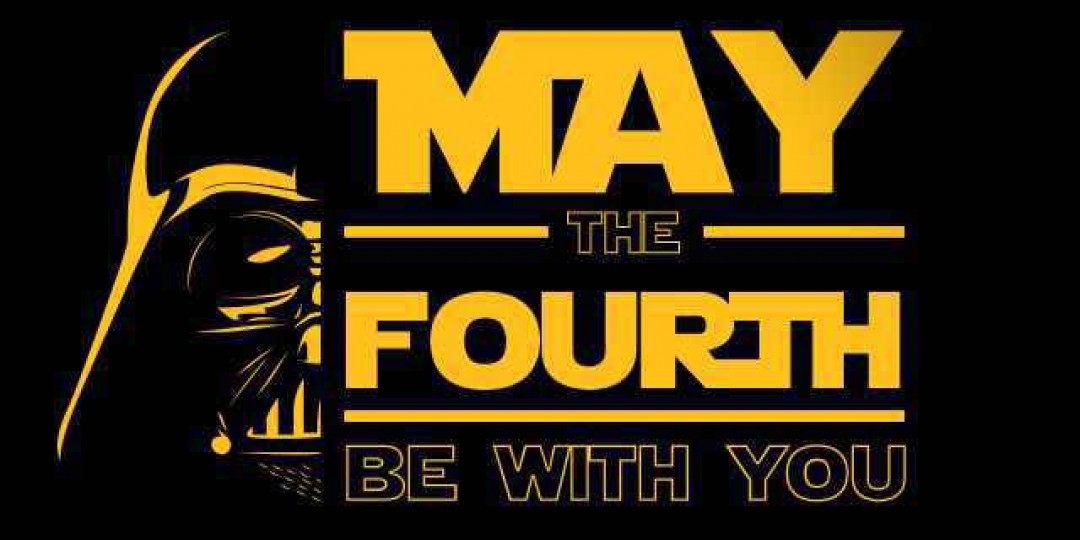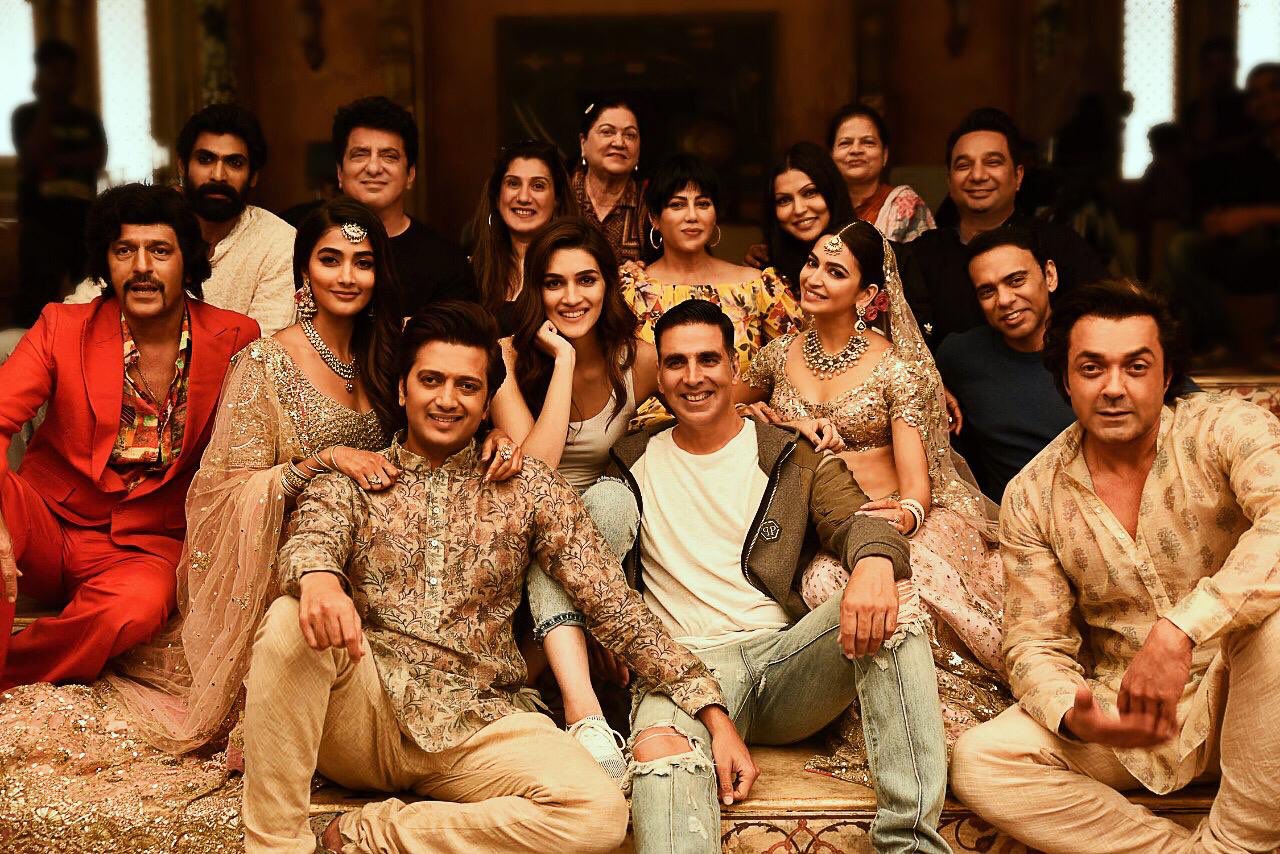After the praiseworthy Ee Ma Yau, Lijo Jose Pellissery’s seventh film, Jallikattu – which explores the ‘beastly side of men’ – recently went on floors
Lazy seems to be Lijo Jose Pellissery’s favorite adjective to describe himself. He drops the word several times during our conversation – to talk about his dormant reading habit or his inability to watch as many films as he wishes to. The filmmaker’s career graph though, doesn’t suggest this self-confessed indolence. Six films and eight years in the film industry later, Lijo Jose Pellissery is now one of the most acclaimed filmmakers in Malayalam, constantly pushing his own bar and exploring new narrative terrains with every new film. A day after we meet at a café in Panaji where he is a guest at the 49th International Film Festival Of India (IFFI), Ee Ma Yau (2018), his sixth directorial, would win two awards in the festival’s coveted competition section – the Best Actor award for lead actor Chemban Vinod Jose and the Best Director award for Lijo. The film, hailed as his masterpiece, had earlier earned him a Kerala State Film Award for Best Director.
Son of late actor Jose Pellissery, a well-known character artiste in Malayalam cinema, Lijo had his eyes set on cinema from a very early age, although he waited enough to make his first film. In 2010, he made Nayakan, a thriller-drama with actor Indrajith playing the lead. City Of God, his sophomore film, was a more star-studded crime-drama, with multiple narratives interlinked by a road accident in Kochi.
Amen (2013) finally announced his arrival in style. The film, a satire set around a backwater village’s Christian community, went on to become a huge critical and commercial success. It was followed by a multi-starrer big-budget project, Double Barrel, that fell at the box-office, and garnered polarized reviews. Resurrecting himself from the giant fall, Lijo pulled off Angamaly Diaries, a high-energy indie drama with a cast of new actors.
My first rendezvous with Lijo was in Dharamshala where he had come to attend a screening of his Angamaly Diaries at the town’s international film festival in November 2017. Post the screening, he sat outside the venue with a small bunch of young admirers, to whom he showed a teaser of his upcoming film on his smartphone. The world outside Kerala had just discovered the fresh and infectious beauty of Angamaly Diaries, but the filmmaker had clearly moved on to a new film, a dark drama on death and life.
A year later, Ee Ma Yau finished its successful commercial run and a brief festival circuit. When I ask him if the film had the potential to go to more film festivals across the world and win accolades, he shrugs. “When I am done with a film, I don’t like to run around with it, but move on to my next. Also, I believe a film will always find its audience. It doesn’t have an expiry date. People will watch it somewhere – may be illegally download it from Internet. Films are for people to watch.”
Lijo had to take a brief break from the shoot of his upcoming directorial, Jallikkattu,which is under production in Idukki, to attend the IFFI. “It is a satire. There is a lot of humour,” he says of the film. “I have tried to explore the beastly side of man through this film. It’s set in a rural space. I think it’s an idea that hasn’t been explored much before. The title of the film is very close to what we are dealing with in the film. There is a subtext, and if no one gets it, it’s all fine (laughs).”
Excerpts from the interview:
After associating with writer PF Mathews in Ee Ma Yau, you have collaborated with another author, S Harish, for Jallikkattu.
I read Harish’s short story first, and was impressed by it. After a few meetings with a person, you will know if there is a connect or not. If I don’t get that good feeling, I will cut it off. With Harish, everything worked really well. For the film, we haven’t followed his short story as it is, but took its crux and developed it into a screenplay.
Earlier I had to work towards finding people to collaborate with. Now I am in a position where I can choose to work with people who have an easygoing sensibility; who are like me in dealing with situations. We enjoy similar jokes. That chemistry is important. You need to have that kind of bonding with your technicians, writer, and actors.
Do you always stick to a bound script?
I am not smart enough to keep shooting without written material in front of me. I have to be really convinced about what I want to shoot. As a director, I need to be confident that I can bring this text to screen.
For me, literature always comes before cinema.
Has it always been so?
When I was in college, especially during the time I broke my leg and spent a lot of time in bed, I became a voracious reader. I read a lot of classics then. Tolstoy, other Russian authors, Latin American literature… I slowly moved to cinema. That’s a trap. After you discover cinema and get hooked to it, reading habit suffers. I never used to write much although I’d think I’d be able to pull it off. But I am lazy.
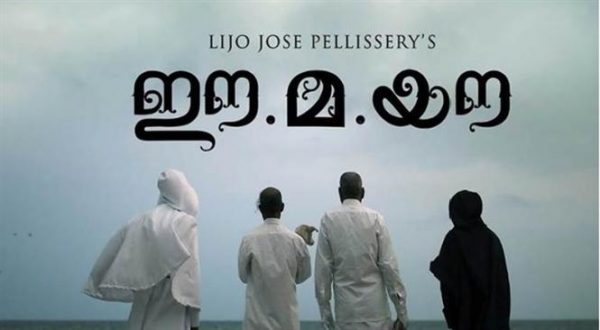
Was it the love for literature that brought you close to PF Mathews?
I went to him to discuss another project named ‘Anti-Christ’ which didn’t take off. It’s a noir drama, and I wanted to get familiar with that subject, and he gave me his book, Chavu Nilam, and said it would help. It was the first book of Mathews that I ever read. What can I say, it blew me away! The night I read the book, it was pouring outside my window. That added to the psychological effect the book has. It was an inexplicable experience. Chavu Nilam is a really dark novel. If someone visualises it exactly the way it is written, the audience won’t be able to stand it. I am sure it is one literary work, like several others, that no one can turn into a film. You can pick up a character, but how can anyone make a film out of, say, Khazakinte Ithihasam?
That said, I am surprised Chavu Nilam went unnoticed in the public sphere for a very long time.
To what extent did Chavu Nilam influence Ee Ma Yau?
Not directly, but Ee Ma Yau’s atmospherics has traces of Chavu Nilam. I think it’s only natural because I had read the book, and also the way Mathews wrote it, especially the climactic portions. It’s on his literature the film is built. Without its beauty, there is little left in the film.
I had initially approached Mathews with a brief story-thread. A son who wants to do his father’s funeral in a grand manner, but fails miserably at it. I was hooked to this idea of setting a film in the backdrop of a funeral because I know it’s a place where a lot of humour happens. There is a brief scene in Angamaly Diaries, if you remember. I had thought of making a satire drama, but changed my mind once I saw Mathews’ version. He turned my one-liner into a screenplay that is incredibly moving. The literature quality of the text is what made the film what it is. The film had to hold the audience by their neck. The Latin Christian background was Mathews’ idea. We had initially thought of placing it in Fort Kochi, in an Anglo Indian community. That would have been a different looking film. Here, the sea lends a different shade to it.
The father-son relationship is a recurring theme in your films. In Amen, it’s his dead father who helps Solomon pick up the pieces and face life. In Ee Ma Yau, Eesi goes to great lengths to give his father the grand funeral he had dreamed about.
I had a very warm relationship with my father. Drama, cinema, books etc were our points of discussion. His death took a toll on me. I went back to Kerala when I heard the news. I wasn’t employed then. The emotional graph of Ee Ma Yau is that one day of mine: the mental trauma of facing his passing away and the subsequent funeral. So Ee Ma Yau will remain as my most favourite film. I always find mistakes with every film I have made. In this one, I found fewer mistakes than usual (laughs).
Also, the Church and its interference in the life of common people is a theme that recurs in Amen and Ee Ma Yau. Angamaly Diaries culminates in the backdrop of a church festival.
I am not religious. I am not even sure if I am spiritual. I do acknowledge the presence of the one designer who made everything that we see, but I don’t know what to call it.
That said, St George has always remained a constant symbol in my life. I spent my childhood in a hostel. I had a Christian upbringing. The culture I grew up in gave me these visuals and imagery that often spill into the films I make. I might not be able to narrate a story in a different milieu with this level of conviction because I haven’t experienced it.
This theme of individual against the Church must have something to do with the place I come from. The situation in Amen where they decide to pull down an ancient church is something that has happened many times across the world. In Chalakkudy (Lijo’s native place, a town that lies beside Angamaly) they did that, and replaced the beautiful old church with a new tasteless structure. The old church had a beautiful altar and a ceiling with majestic painting works. Now nothing remains of it. The funeral scenario in Ee Ma Yau where a person dies and the kin is unable to cremate him with dignity is a situation that is so universal – something that has happened in many families. A person who lived his entire life on this Earth is denied of a cremation ground! That’s complete disappearance of humanity.
This isn’t a pet theme. It happened by chance in both cases. Amen was actually inspired from KG George’s Panchavadi Palam. Instead of the bridge, we have the church here. In addition to that, there is a running track of the band group. Ee Ma Yau happened when a project we had been planning – Jallikkattu – had to be pushed a little since it needed a lot of homework on VFX.
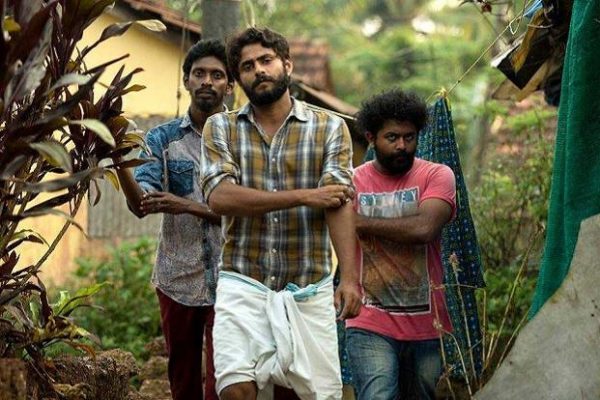
Most of the frames in Angamaly Diaries were jam-packed, and the film had a horde of new-comers. In Ee Ma Yau too, the funeral scenes have a lot of people in the frame, and there are a lot of things going on. How did you find an order to the chaos on the set as well as on screen?
Jallikkattu is much bigger than Angamaly Diaries in terms of crowd and chaos. I don’t know how to explain my process. I guess you just leave the actors free, and watch what happens in the frame. And later, find a rhythm for it. In Ee Ma Yau, in the scene where the mistress and her family enters, I just screamed “action”, and waited to see what unfolded. Of course, it went into a ruckus at first. I watched everything and then choreographed it. Eventually, the scene looked really live, as though everything had been taking place for the first time. Similarly, the bar fight sequence in Angamaly Diaries. You can never choreograph a fight sequence that happens inside a bar. I have seen such fights. You have to let it go haywire. I would say, it’s the best and easiest when you have new artistes. They are dare devils who aren’t afraid of the camera or any consequences. Perhaps after two three films, they change, and start performing for the camera consciously.
Sound designer Renganaath Ravi has done a magnificent job in Ee Ma Yau. How did you envisage the soundscape of the film?
I am very particular about the soundscape of my films. I pick each and every sound, for every reel. I sit for the entire mix. We were particular about the sound of the wind and sea. We used two propellers throughout the film. In every single frame, you hear leaves rustling, and clothes of the passerby moving in the wind. If you stand in the actual place, it’s not very windy. But in a small setting like that, you have to play with these aspects. That’s the fun part.
Similarly, I pick out songs for my films. I sit with the composers, often hum the kind of music I want, and then they choose instruments which can replicate that.
Your films after Double Barrel are on smaller canvases, with more character artistes and new-comers in front of the camera. Was that a conscious decision to stay away from big-budget star movies after the failure of Double Barrel?
The failure of Double Barrel did affect me. When it was about to release, I was sure it was not the product I wanted. I knew this was completely wrong, but I had to go with the release because there were many things around it. I had let it go since I didn’t have the control.
In fact after Double Barrel, I had planned a couple of similar projects. But Angamaly Diaries happened. It was supposed to be Chemban’s (Chemban Vinod Jose) directorial. He did the script, and he was more familiar with the place, so he had been planning to direct it. At one point, he approached me. I read it once, and the project just took off. Talking about casting stars, I always look for the perfect face for a character, not someone with a market value. If storytelling is convincing and powerful, the market value of the actors hardly matters.
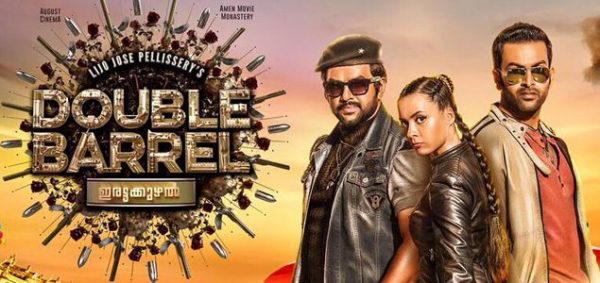 Time and again, you have appeared in front of the camera. How did the acting career happen?
Time and again, you have appeared in front of the camera. How did the acting career happen?
I don’t enjoy acting. I was forced into acting several times, and I still get asked. But I reject such offers as much as I can. I don’t like it. It’s a difficult job to stand in front of the camera with costumes. I go several number of takes at times. Padayottam was my kind of language and place, so I scraped by. When I was in college, I used to do a little theatre. That was something of a group activity. But acting isn’t my cup of tea.
Who is your favourite filmmaker?
It is difficult to name one. There are so many good filmmakers. One of the first Indian films that moved me was perhaps Sholay. That’s part of my childhood memories. I admire Stanley Kubrick a lot. He makes films on a level that we can’t ever touch.
Amen reminded me of the films of Emir Kusturica.
I hadn’t watched his films when I made Amen. Later, Mathews suggested his films to me and said there were some similar elements. So I watched Black Cat White Cat. There is so much craziness in Kusturica’s films. The kind of music he uses – Balkan style – is something I love. I grew up in Chalakkudy which is the center of church festivals. Band music is an intrinsic part of its culture.
That brings to mind the opening scene in Ee Ma Yau where a shot of a band procession is cut to Vavachan’s face as though what we witnessed is a part of his dream.
That scene in Ee Ma Yau was cut in a different way at first, with a lot of close-ups – especially one of Vavachan’s face inside the coffin. But the end result wasn’t satisfactory. I felt the costumes looked unfinished and not the way I had envisaged. So we went with a long shot, which worked perfectly as a dream coming out of Vavachan’s head. He is dreaming about his own funeral.
In Double Barrel, Amen and Ee Ma Yau, characters reappear after their death.
I hadn’t thought of it until you said it. Yes, it recurs. I like exploring fantasies, this might be an extension of it. In Ee Ma Yau, we had initially removed the end portion where they wait at the shore for a boat. I thought it was better to not take them to another dimension. I haven’t defined that as good or bad. Black isn’t bad and white isn’t good. They are just wearing two coloured clothes, coming from two different places. Vavachan is standing next to someone wearing black. People wanted to know why it is so. They asked where do animals go after death. That shot lent the film a quality of endlessness. It just made the audience feel that it’s a journey that hasn’t reached its end. There is only one piece of music in the film, and it features in this scene.
Recommended
You said you aren’t religious. But you do believe that death is a journey to the other side.
Of course I do. I believe human mind has no death. It’s just the way I look at it. When I say I am not religious, I mean to say I don’t follow the hard and fast rules that organised religion propagates. I believe there is a designer who gave the tiger its marks, and every organism its structure. Maybe it doesn’t have a human form. Perhaps it’s bacteria. And instead of looking at it that way, people are fighting each other. “ഒരു വക പരിപാടി“ [a nonsensical drama]!
*****
The Lijo Jose Pellissery interview is a Silverscreen exclusive.
